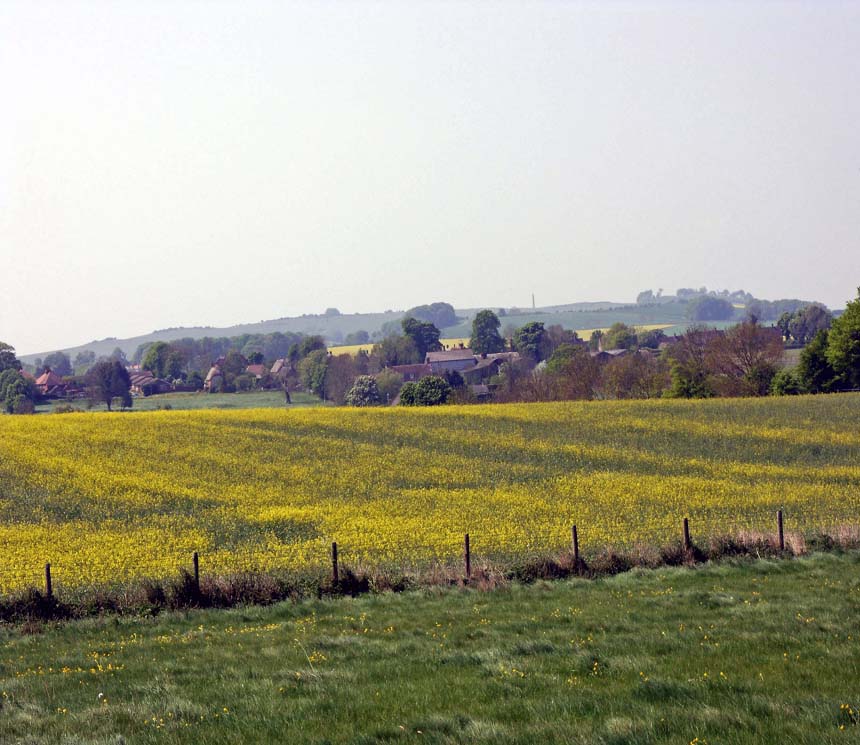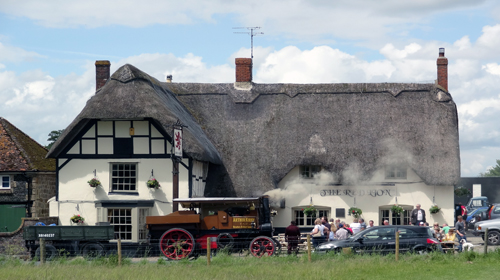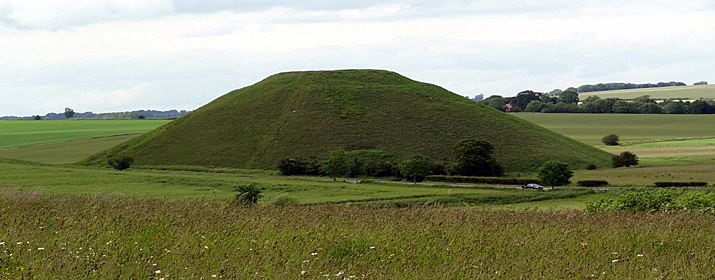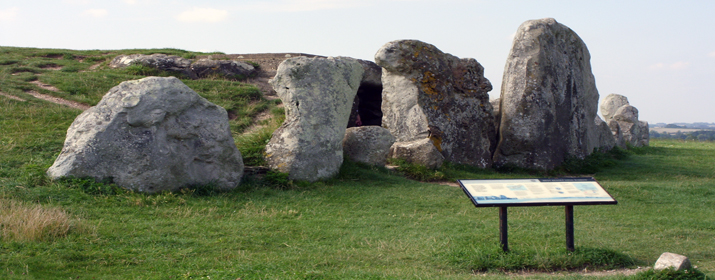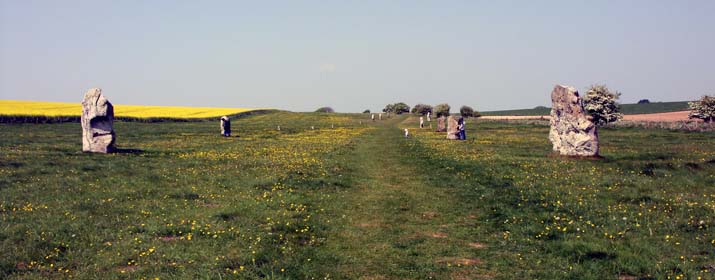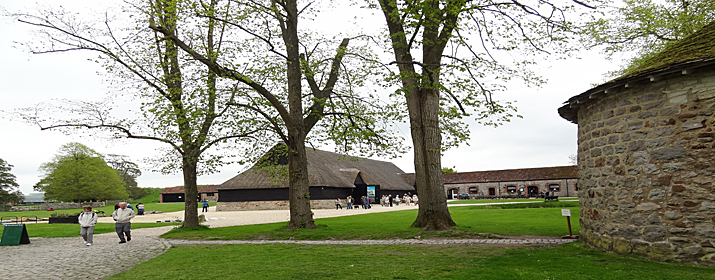
Page 4
These ancient sites are part of the Avebury complex and can be reached on foot or by car.
Silbury Hill, West Kennet Long Barrow, Sanctuary, Barrows, and West Kennet Avenue
Silbury Hill
This site is thought to have been built somewhere in the region of 2400 B.C and 2500 B.C. You can reach this site on foot by crossing the road from the main National Trust Car Park at Avebury and then following the grassy path south. Alternatively, follow the B4003 from Avebury for two kilometres (1.2 miles) and then turn right into the A4 where the hill is about one kilometre (.6 mile) up the road.
Across this area are many small burial mounds. Many are to be found at the Sanctuary site. People assumed that Silbury Hill was a giant
burial version, and thought it to contain treasure of some ancient chief. Several attempts have been made to dig into the hill in the
hope of discovering treasure. The first attempt was made in 1776 when the Duke of Northumberland and Colonel Drax hired a team of
miners to sink a shaft from the top of the hill. The next attempt was led by Dean Merewether on behalf of the Archaeological Institute in 1849 who tunneled in from the side. In 1968, BBC2 (David Attenborough was the Controller at the time) and Cardiff University under Professor Richard J.C. Atkinson, sponsored another dig close to the previous. None of these digs were successful!
During 2000 until June 2007, Fachtna McAvoy carried out archaeological excavation and recording at Silbury while on the Board of the Silbury Hill Conservation Project. In May 2000 a hole appeared on the top indicating that parts of the hill were collapsing. The button below links to a nine minute video produced by Chris Corden for English Heritage, and part features Mr. McAvoy at the site. It deals with the problems of stabilizing the hill, and also includes work taking place within the re-opened 1849/1968/69 tunnels at Silbury Hill.
From June 2007 and in 2008 Dr. Jim Leary (now at Reading University) took over from Mr. McAvoy and directed major excavations into Silbury Hill. From his research, Dr. Jim Leary went on to develop his own theory for the origin of the hill. He contradicts the wide held view that the hill was built in three phases. Instead, he suggests it was built by generations of people and possibly visitors wanting to settle in the region, bringing offerings of earth in baskets from their own home areas, while visiting Swallow Head Spring. The spring is not far from the hill, and today is frequently dry, but in the Neolithic era it was a sacred life giving source of water, and abundant. From these deposits of soil, Silbury Hill eventually reached 39.6 metres (130 feet) in height and took between 100-150 years to complete.
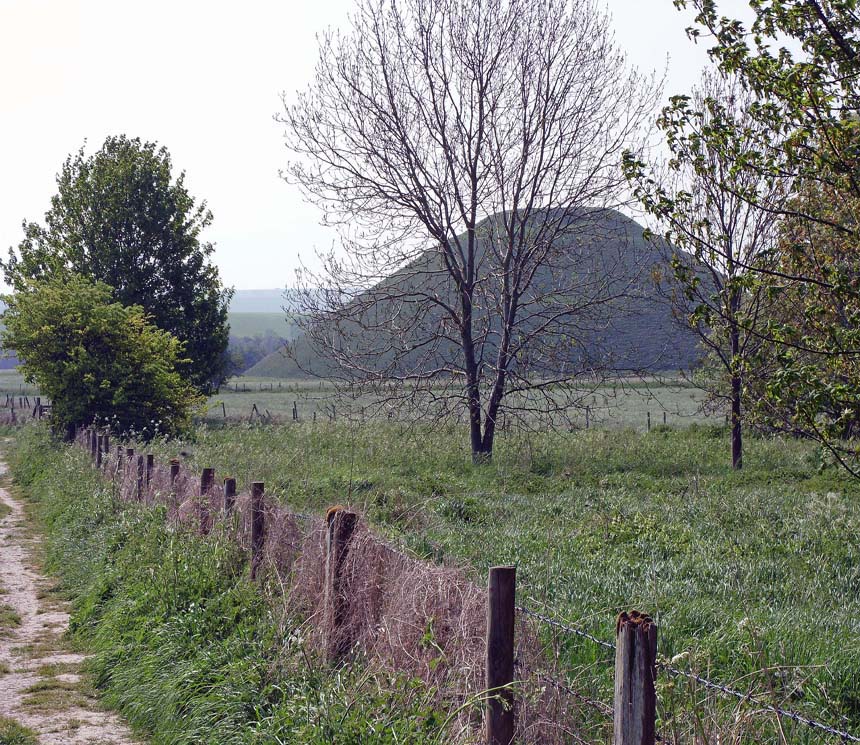
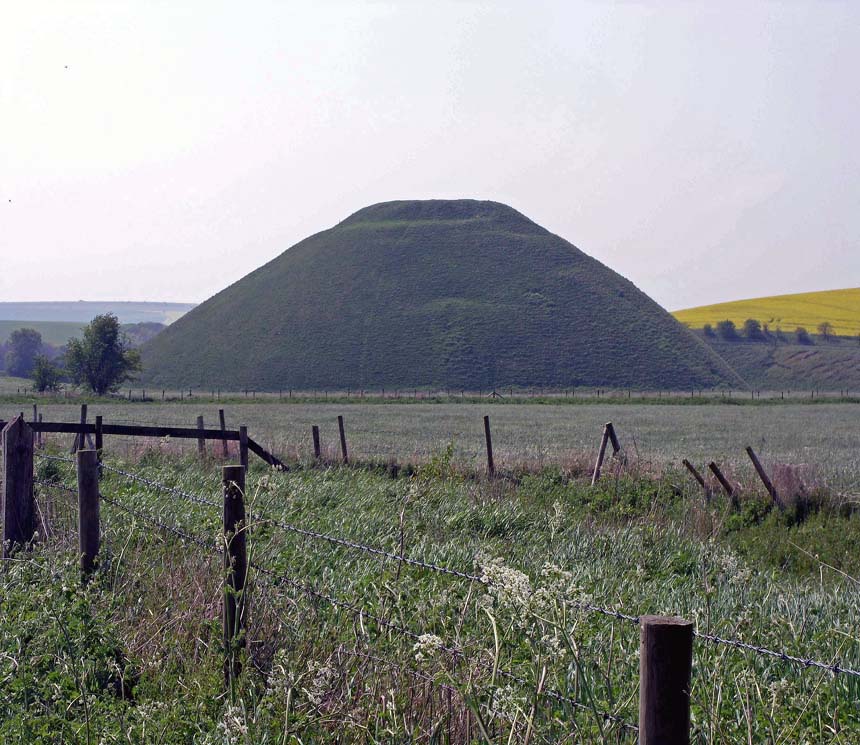
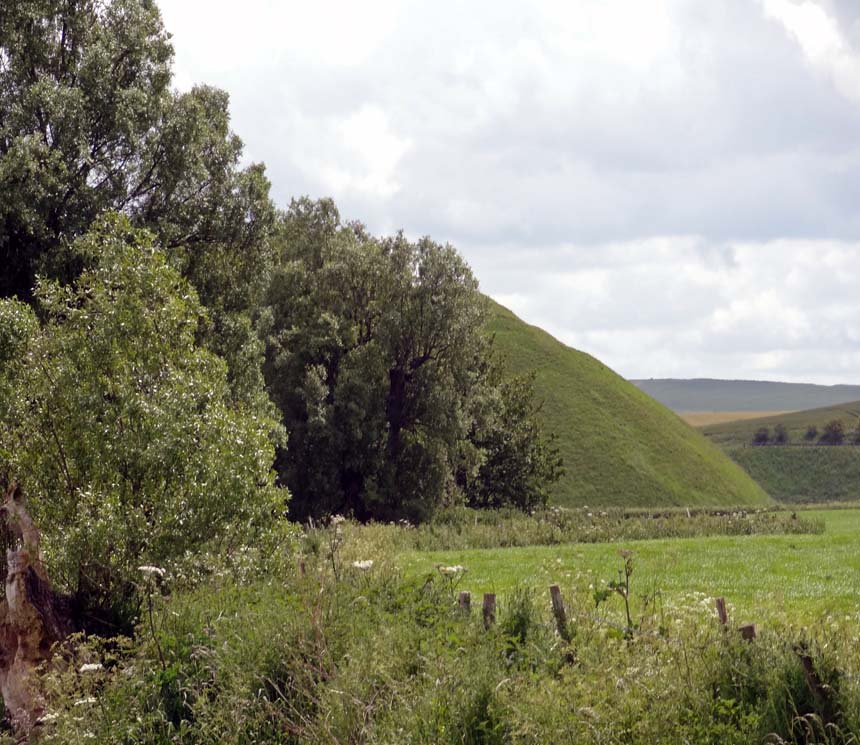
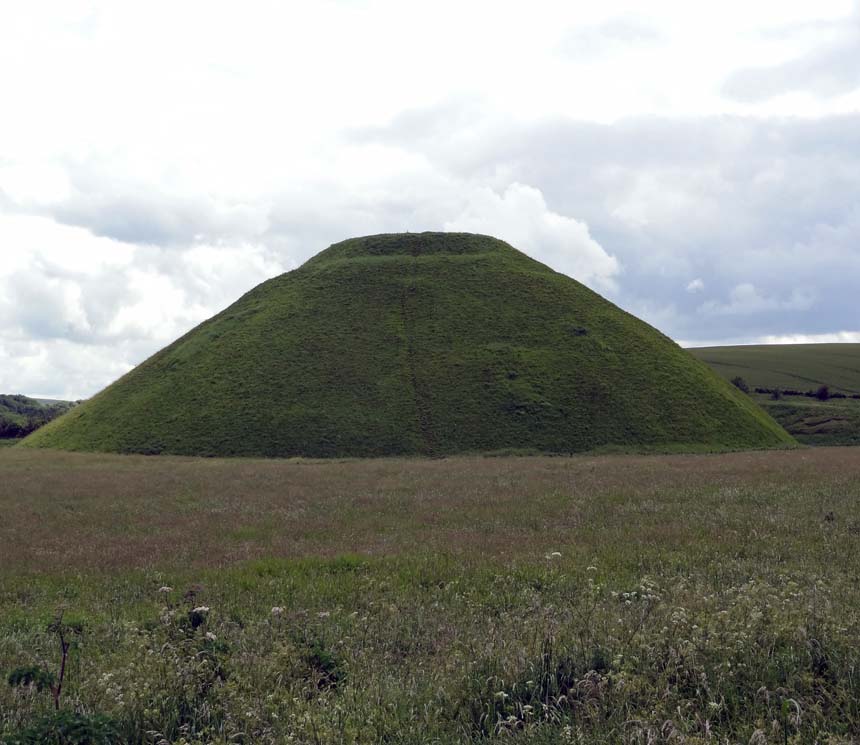
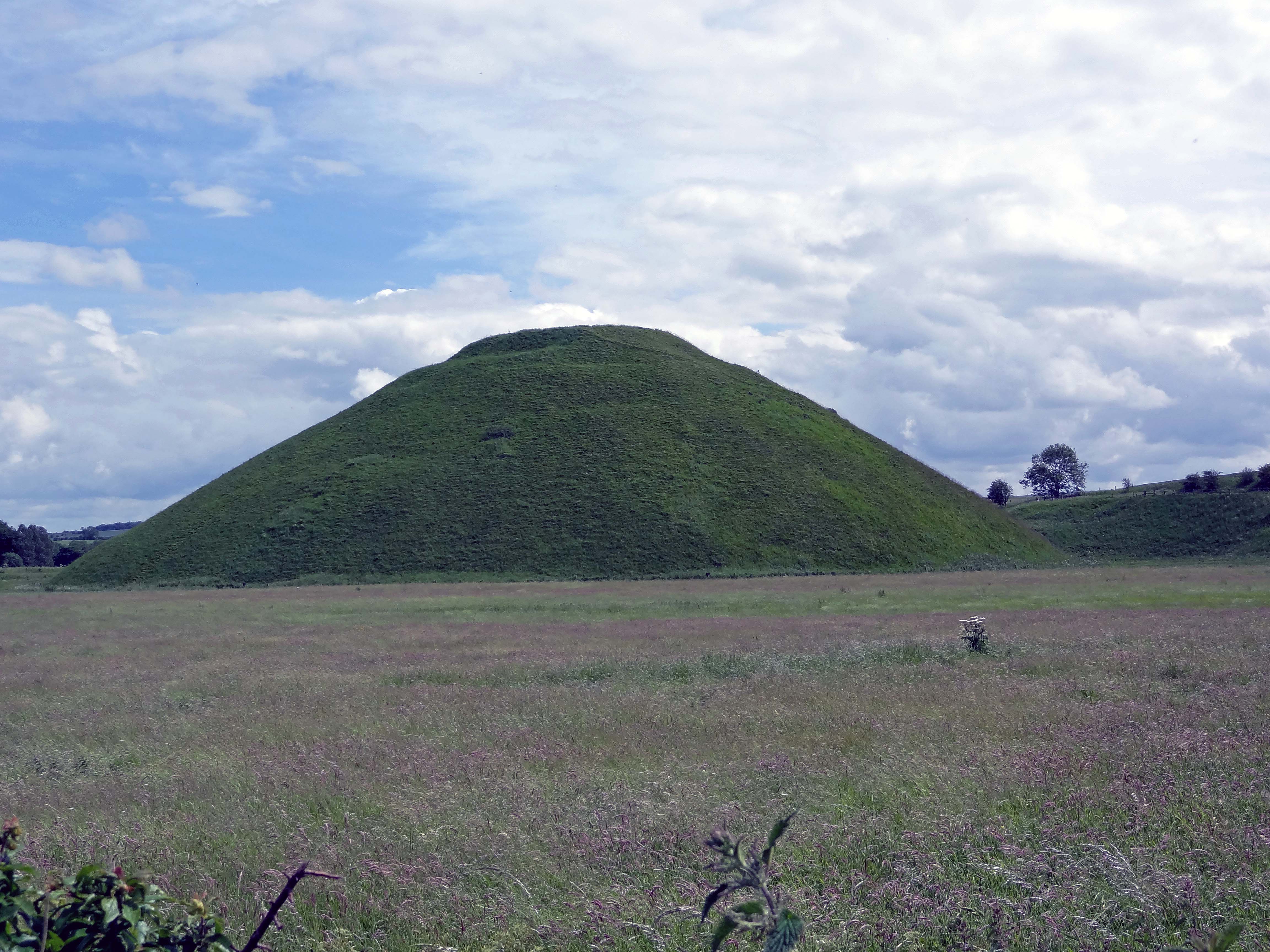
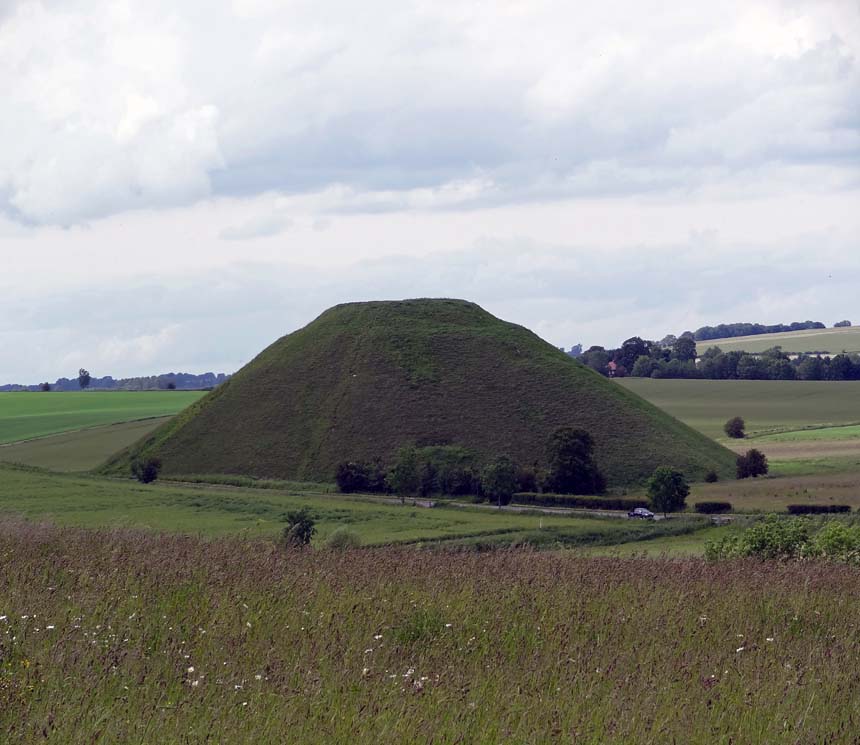
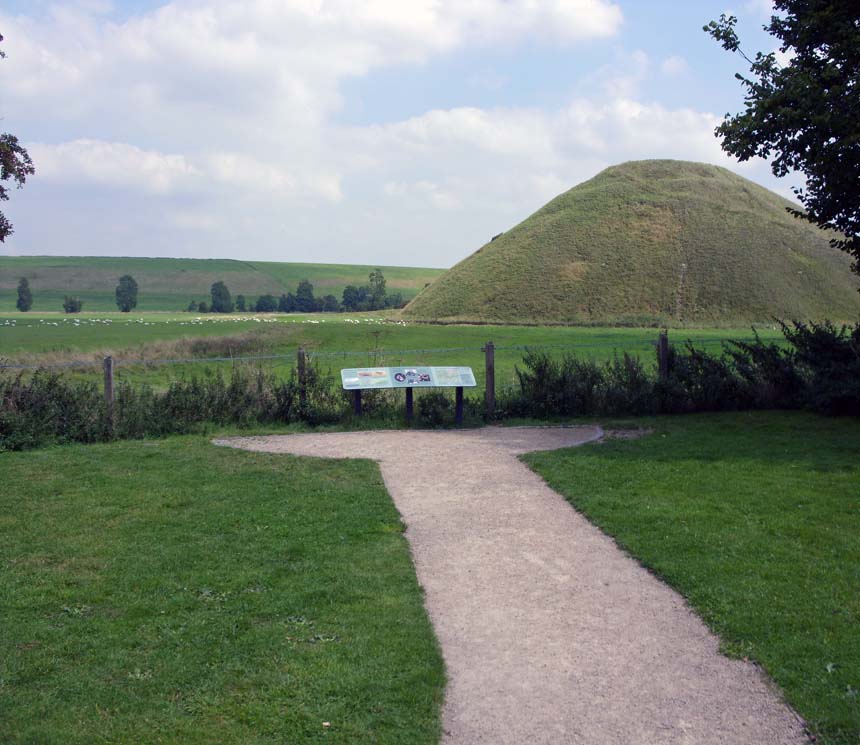
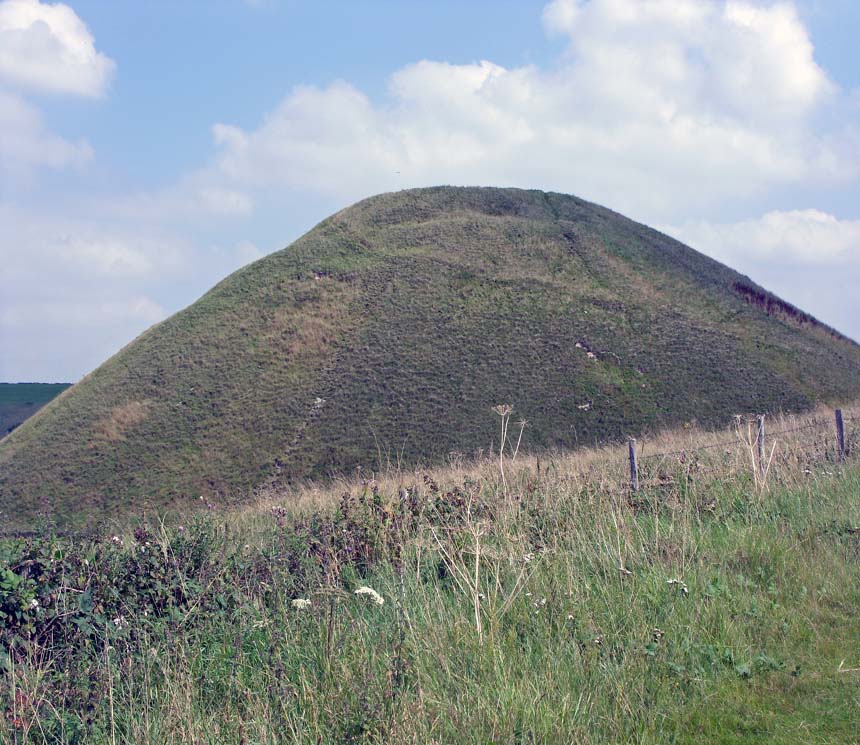 .
.
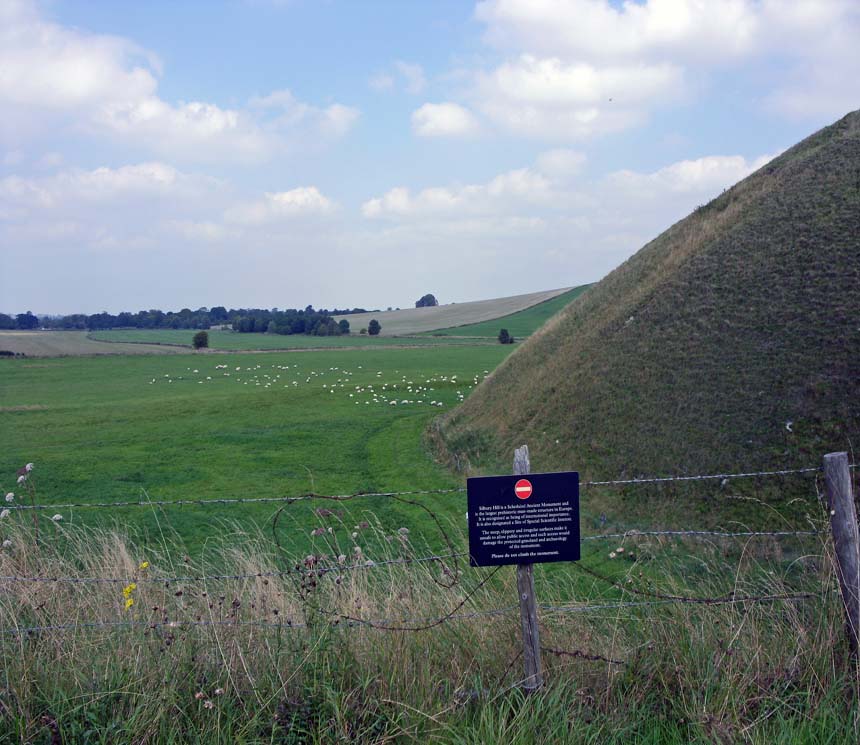
The side of the hill is very steep and you are not permitted to walk on it.
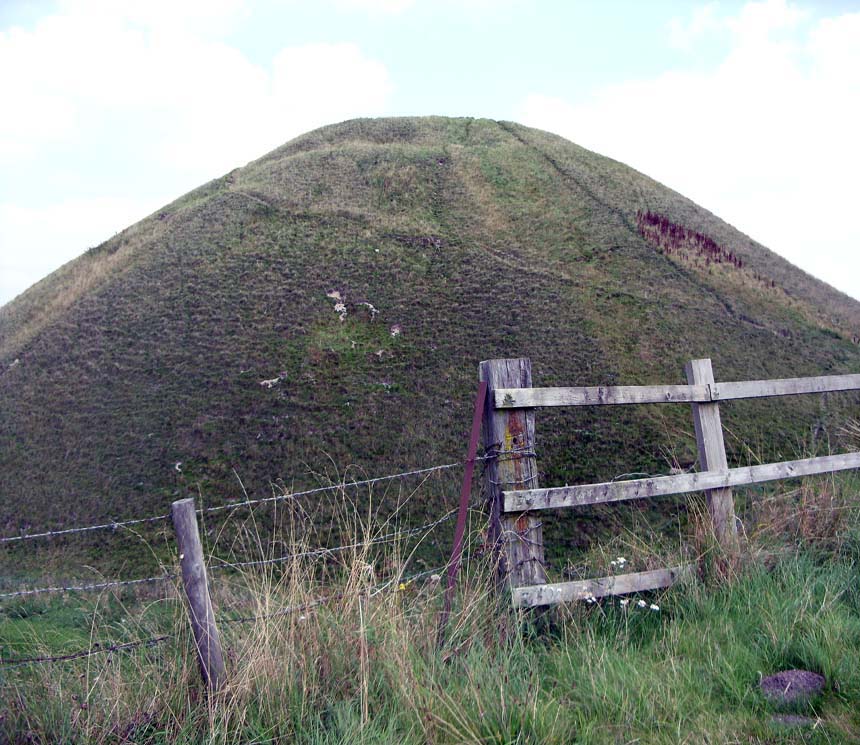
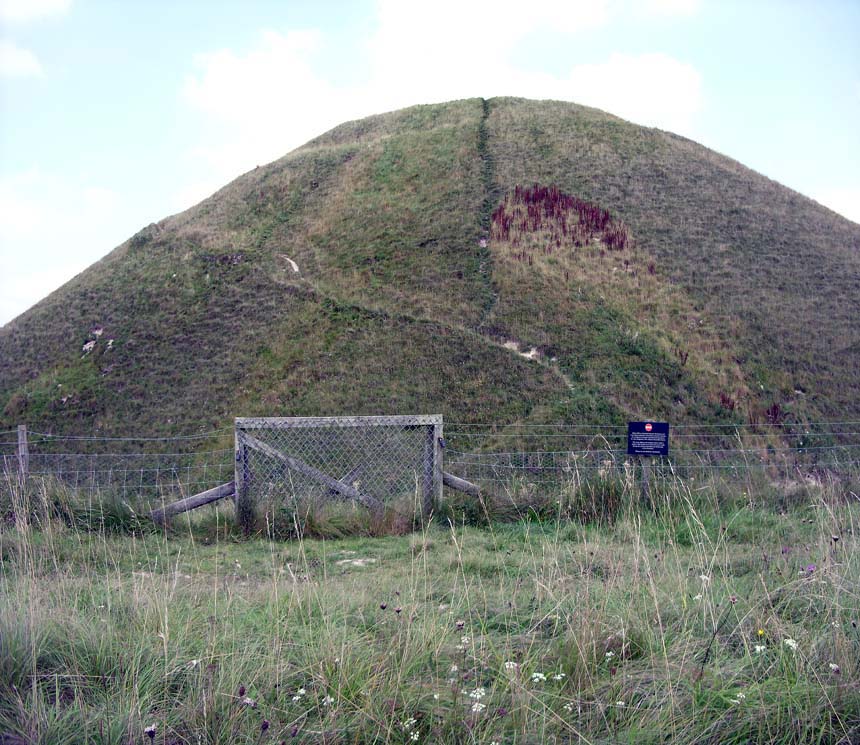
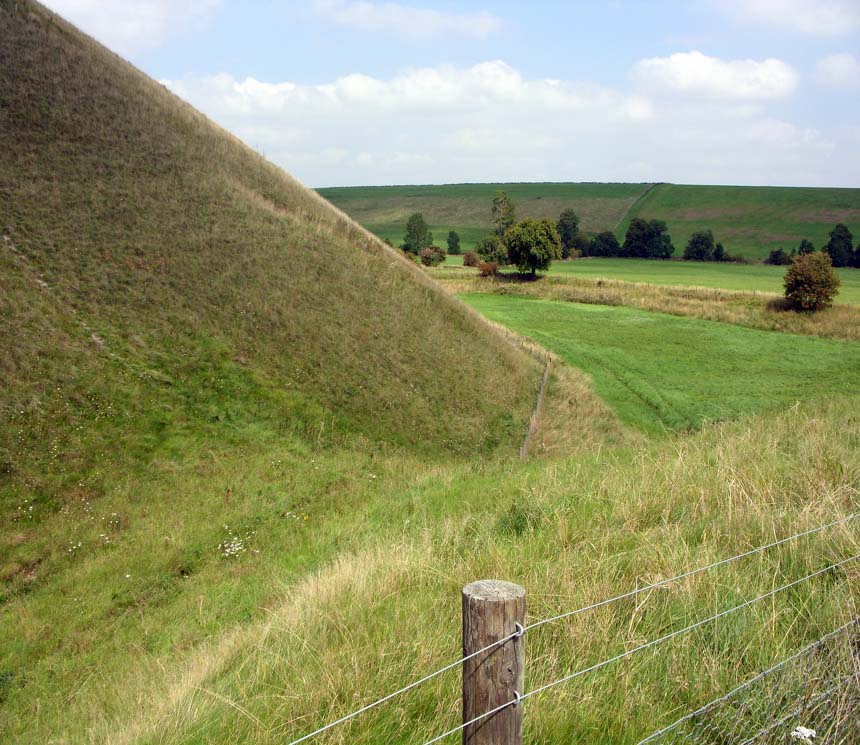
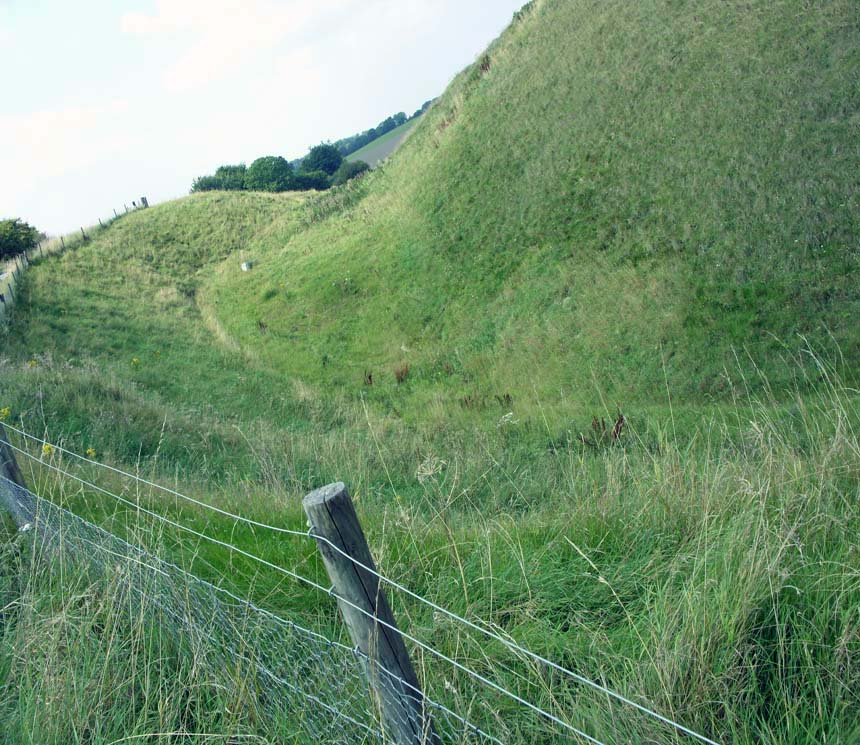
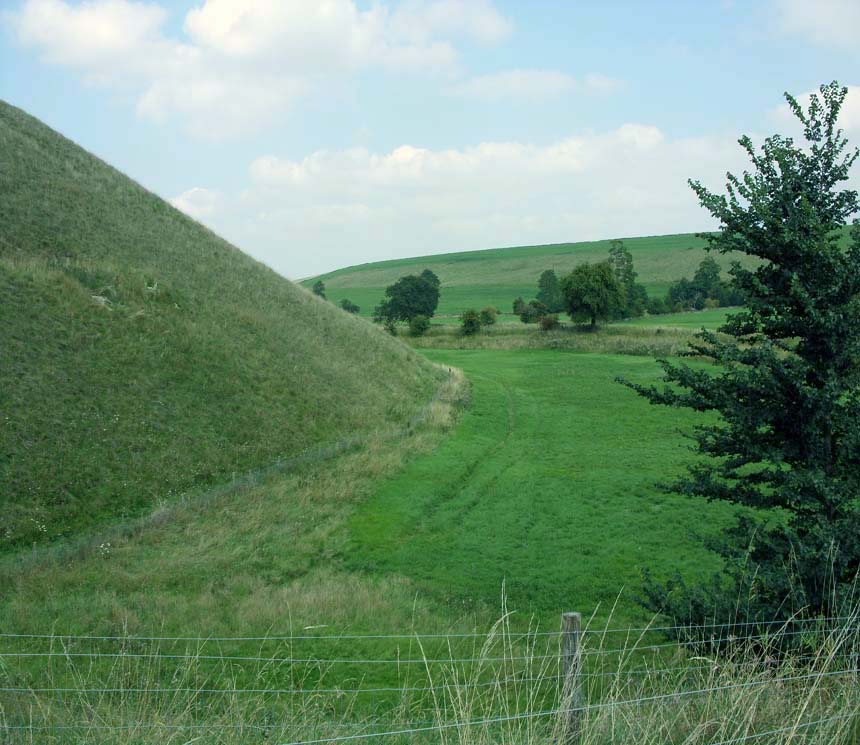
Silbury Hill can be seen for miles, one of its theories is that it was built by ancient people as a symbol that the land around it was
occupied.
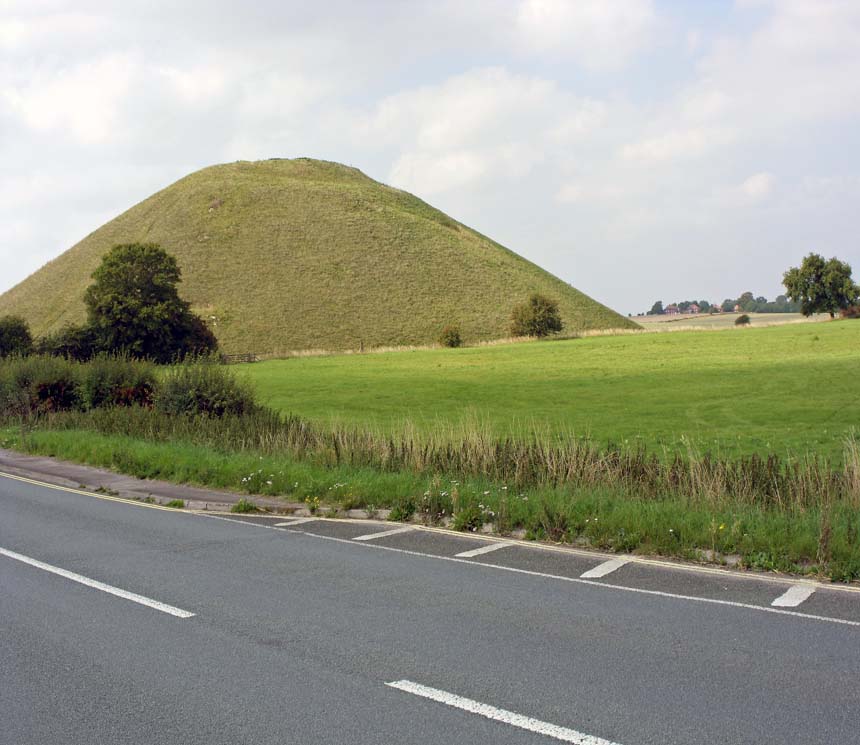
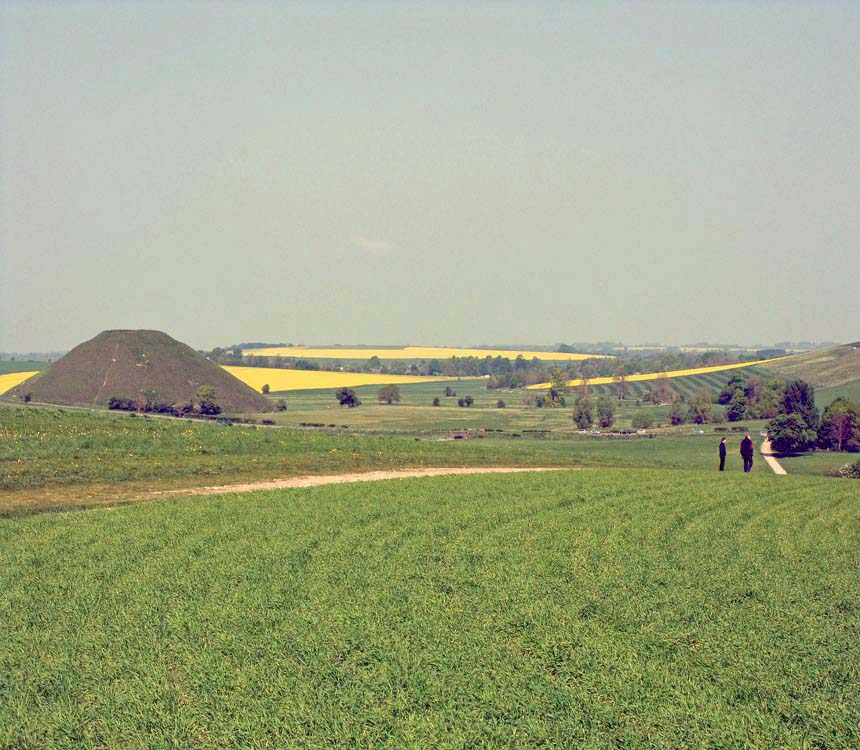
West Kennet Long Barrow
The barrow is located about one kilometre (.6 mile) from Silbury Hill and three quarters of a kilometre south of the A4, where there is
access through an aluminium gate. The barrow is accessible by footpath only.
The West Kennet Long Barrow is one of the largest and best-preserved Neolithic burial chambers in Britain.
Facing east, the front end catches the sun's rays in the early morning. The barrow had been in use from as early as 3500 B.C to 2000 B.C. After this time the Neolithic Beaker people (2800-1800 B.C.) filled in the chambers with stones and soil and the entrance was sealed with the large slabs that can be seen today. Today the visitor can walk into the barrow for about 10 metres (32 ft), but it is sealed from there onwards. Its full length is in the region of about 100 metres (328 ft).
Archaeological investigations in 1859 and 1955-56, opened up the tomb again. Many skeletons were found inside ranging from adults to babies. Some of the bones were scattered and there were skulls missing, so it's thought that in the region of 46 people were buried,
but it could be more. The open part of the barrow is now cleared of skeletons.
On one visit to the inside of this barrow, I could just about see a small jewelled necklace located in the ashes of a previous fire near to
the point where it is sealed. The fire must have been lit the previous evening. A lady from the National Trust just behind me took the necklace from me. She explained that they frequently check the site, and on occasions have to clean the barrow for the tourists. But if anyone wants their jewellery back, then they should make an appointment with them!
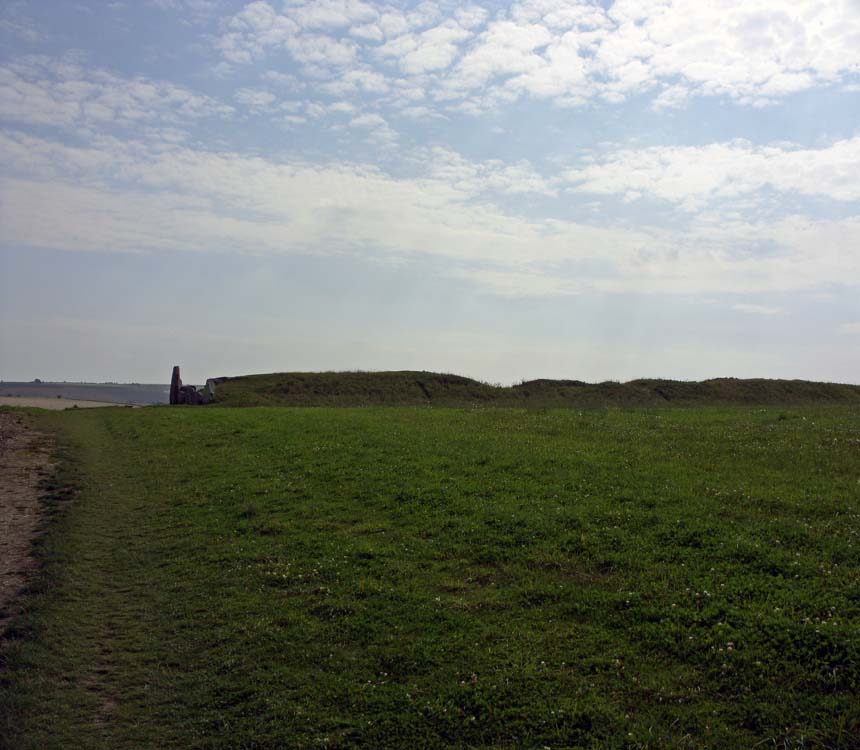
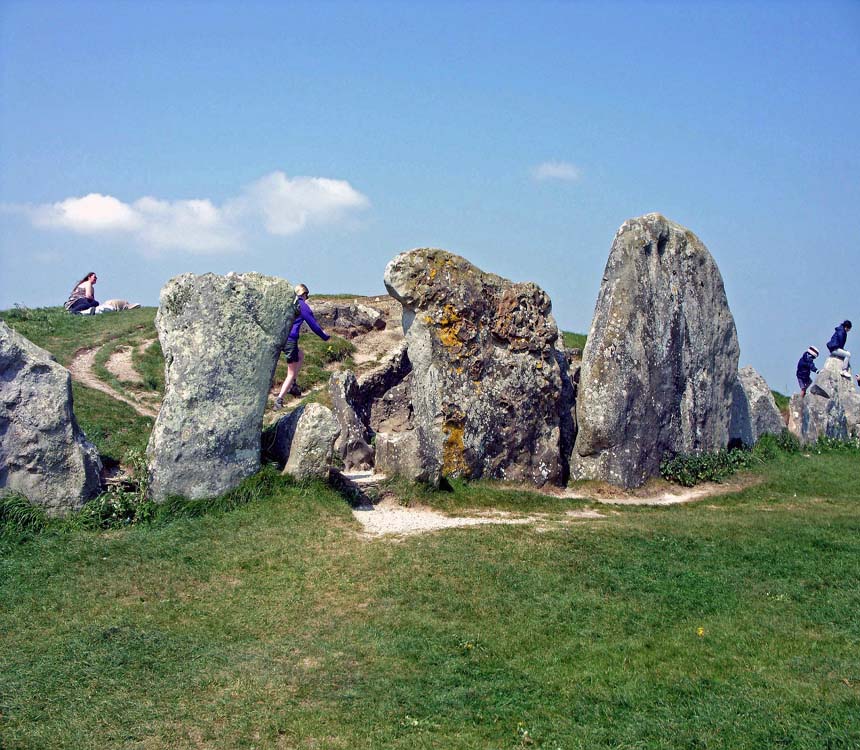
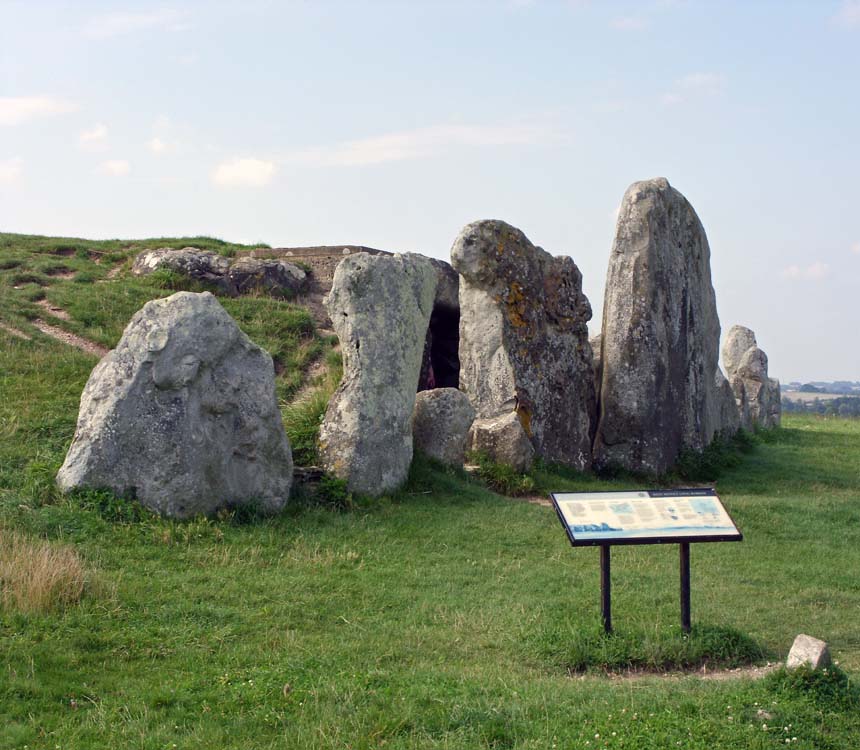
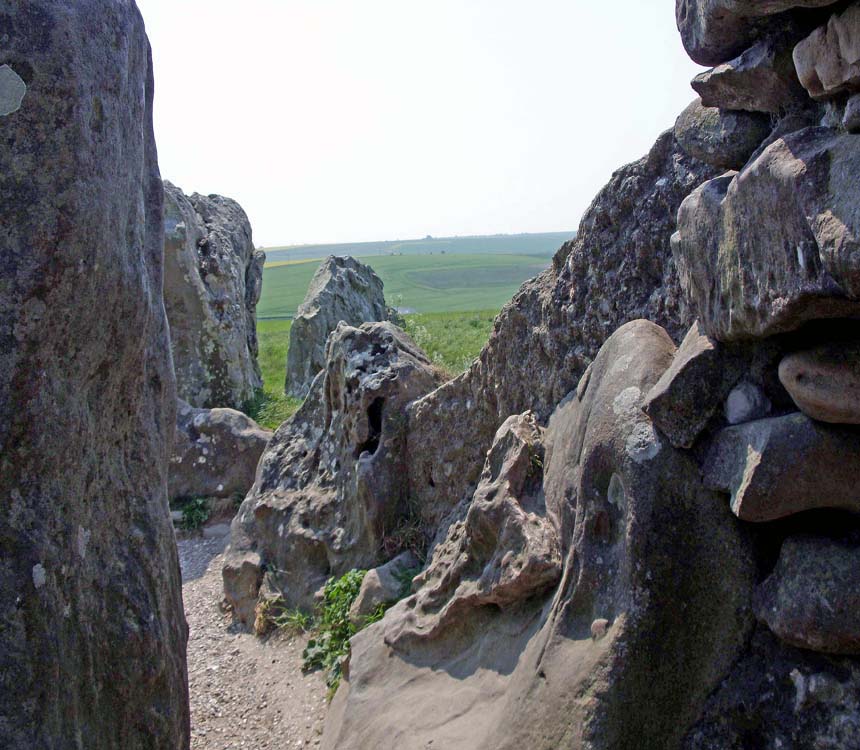
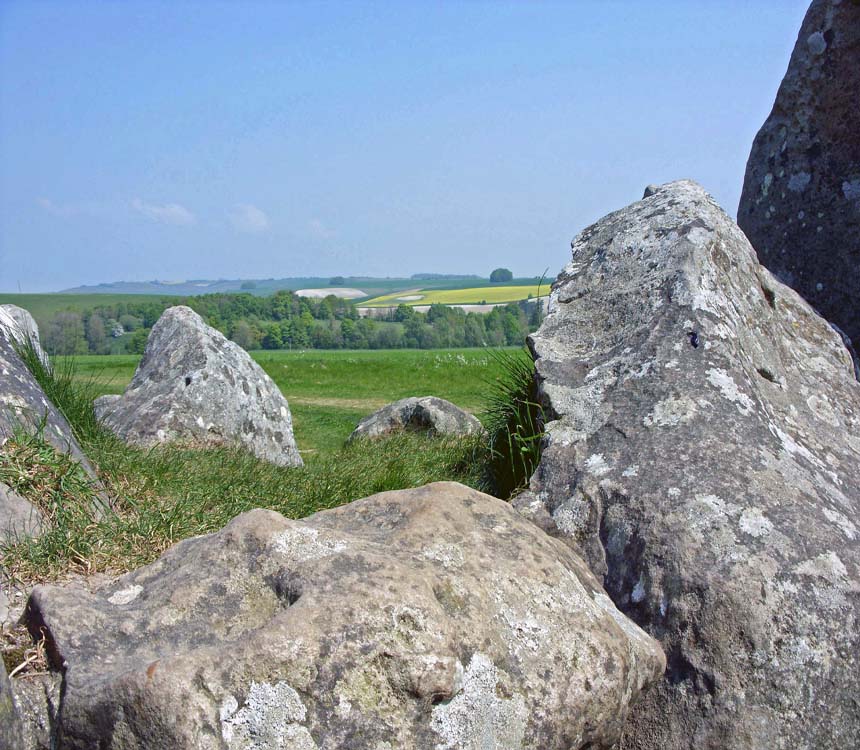
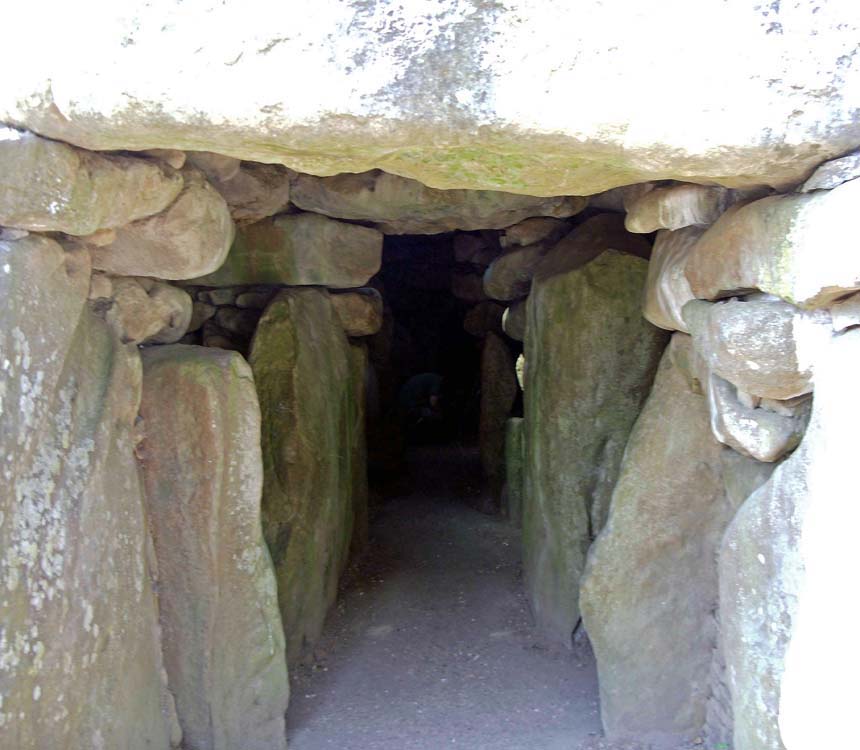
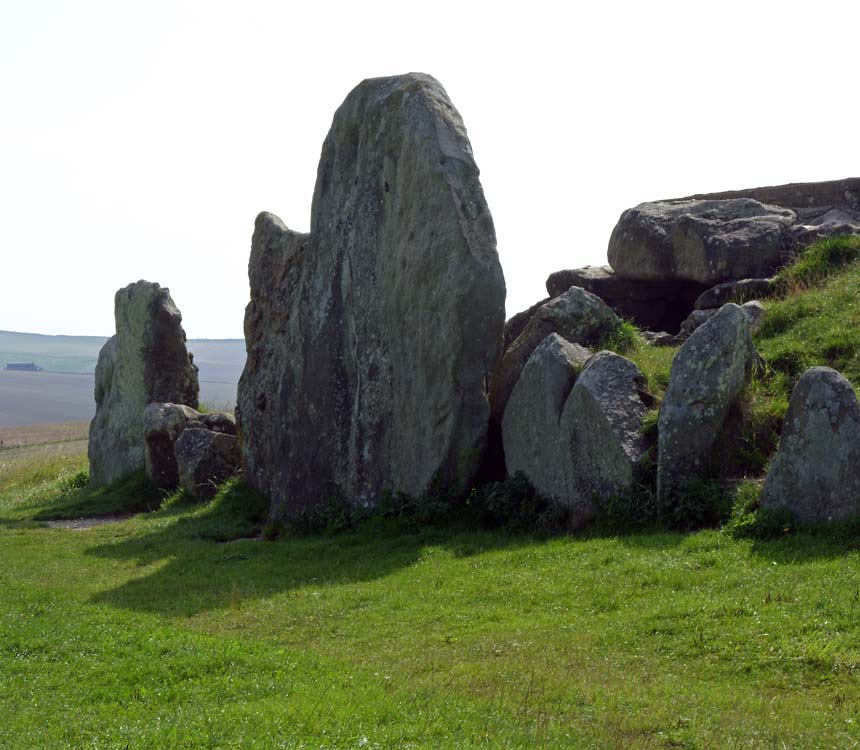
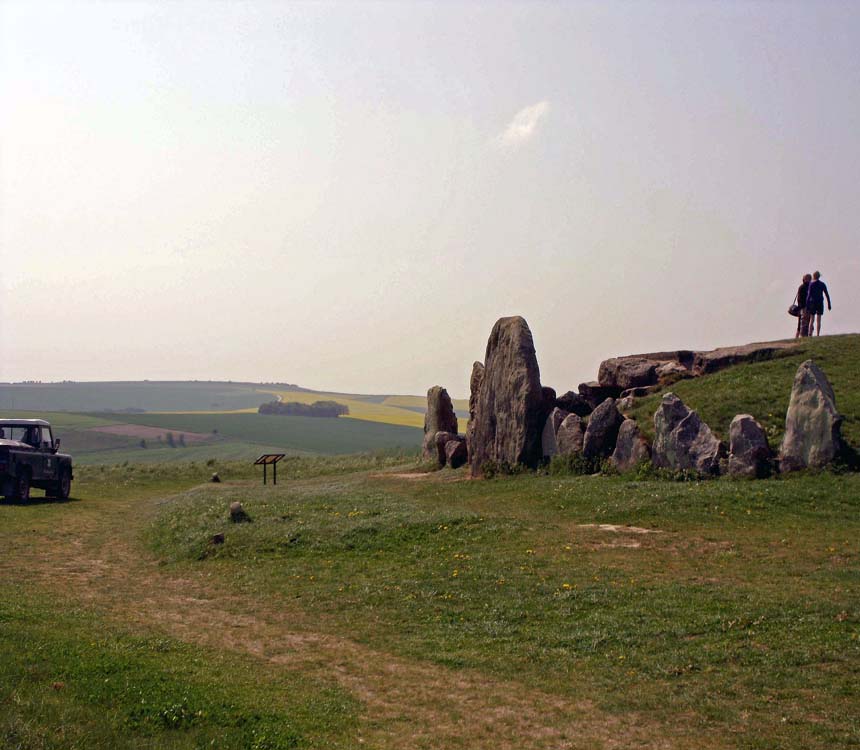
The Sanctuary
The Sanctuary is located on the south side of the A4 on Overton Hill at the junction of the Ridgeway Long Distance Footpath,
2 kilometres (1.2 miles) from Silbury Hill. I've found it's best reached by car driving along the B4003 from Avebury until you reach
the A4, and the turn left. It's a further half a kilometre (.3 mile) up the A4 and there's a reserved place to park your car. An alternative
narrow footpath runs along the A4 road with accompanying fast moving traffic, so it's best avoided.
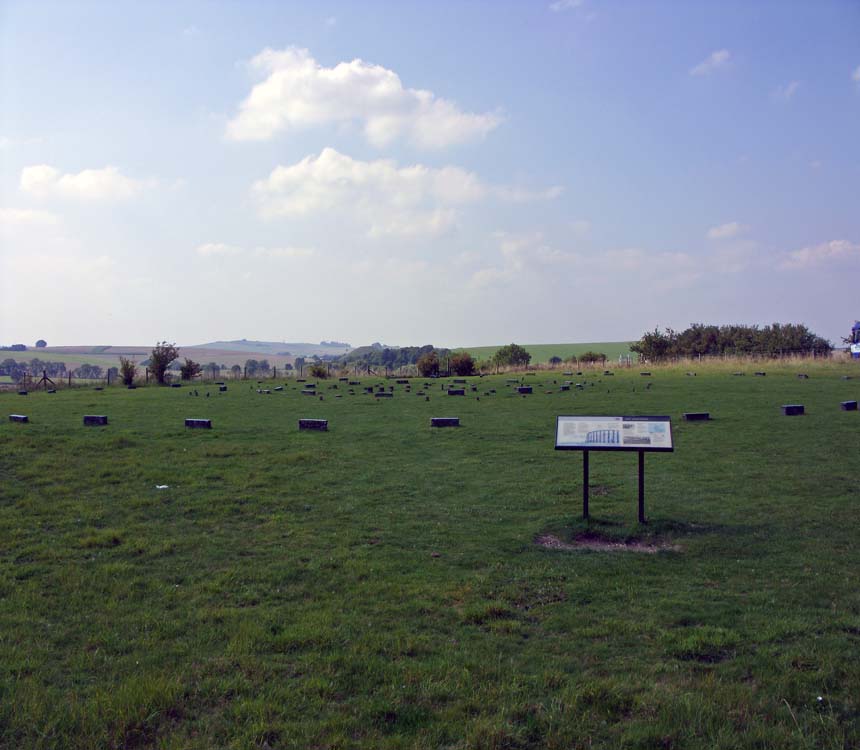
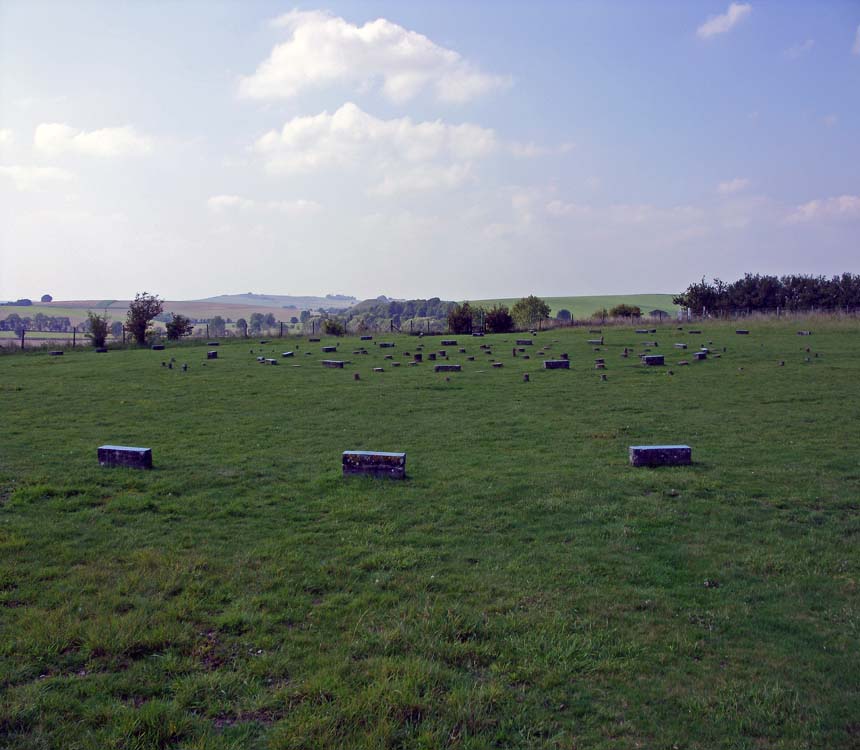
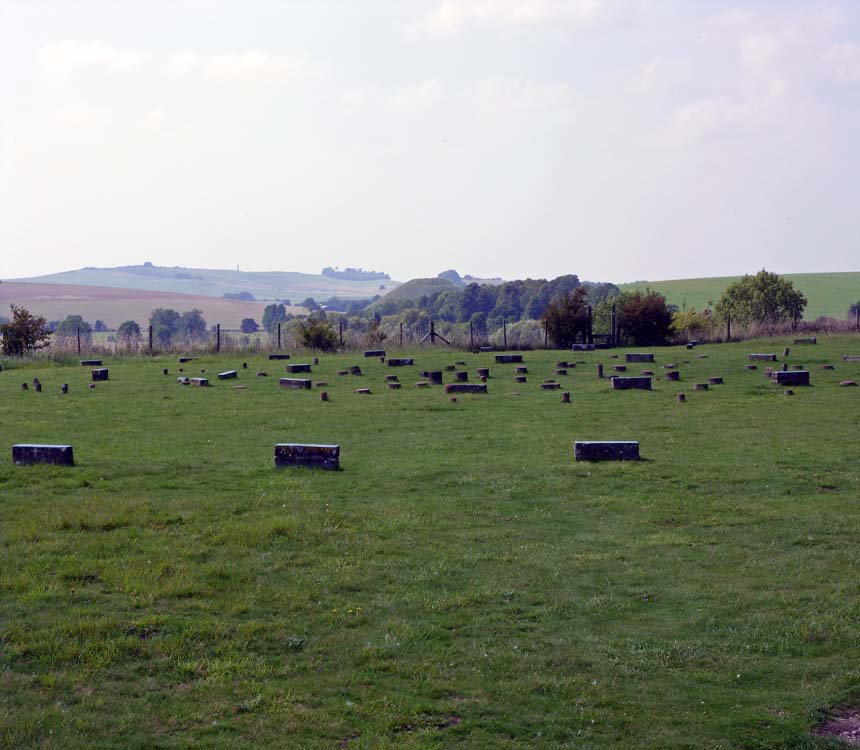
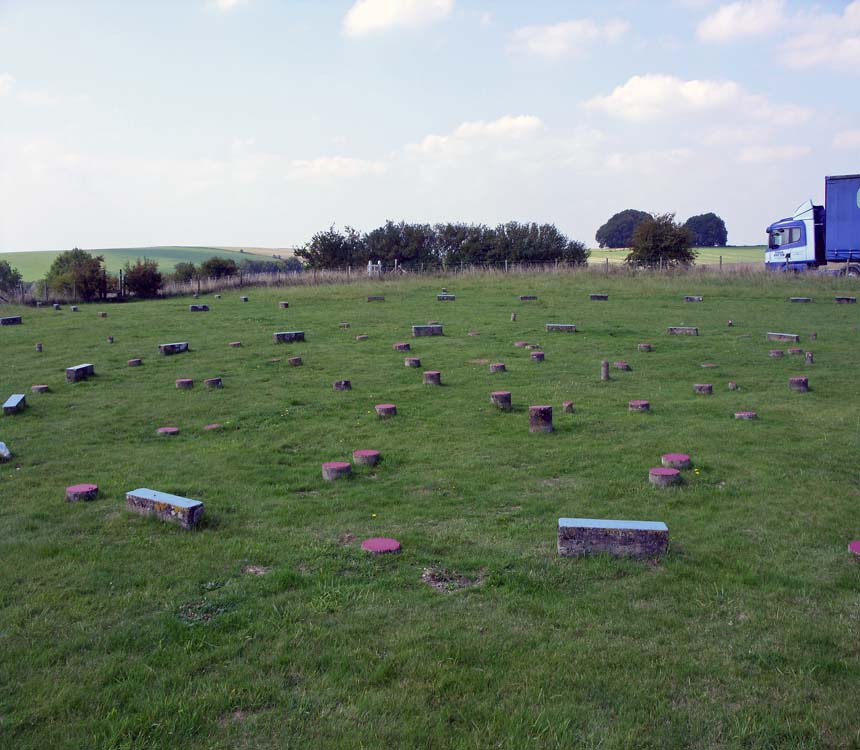
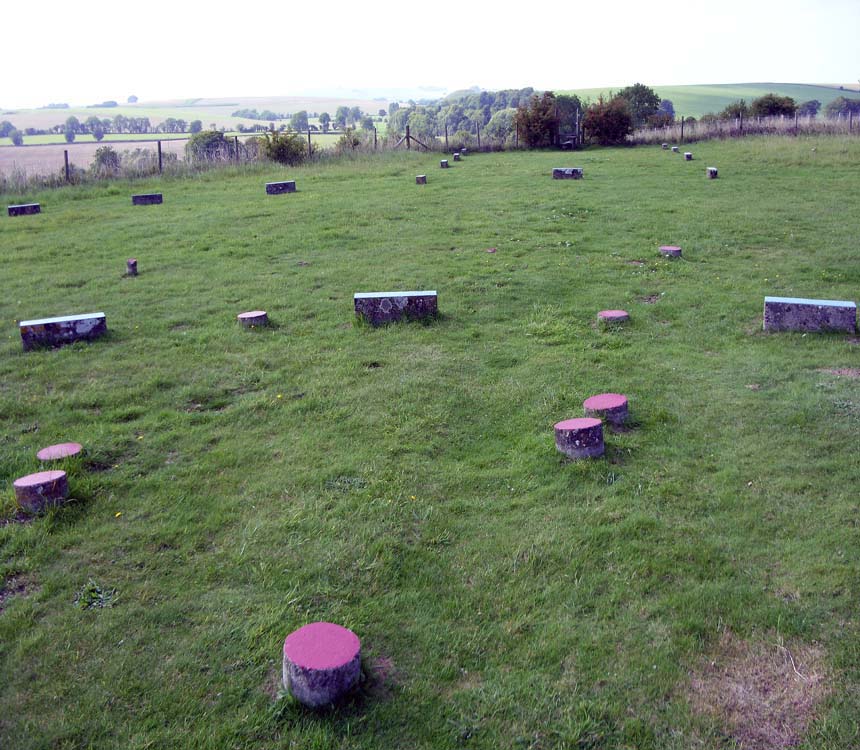
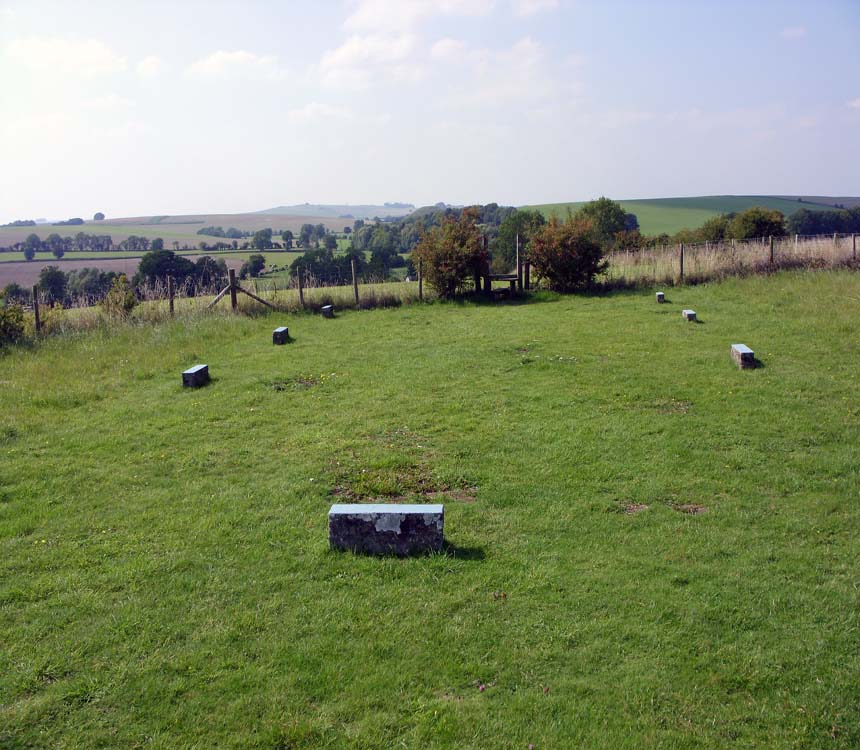
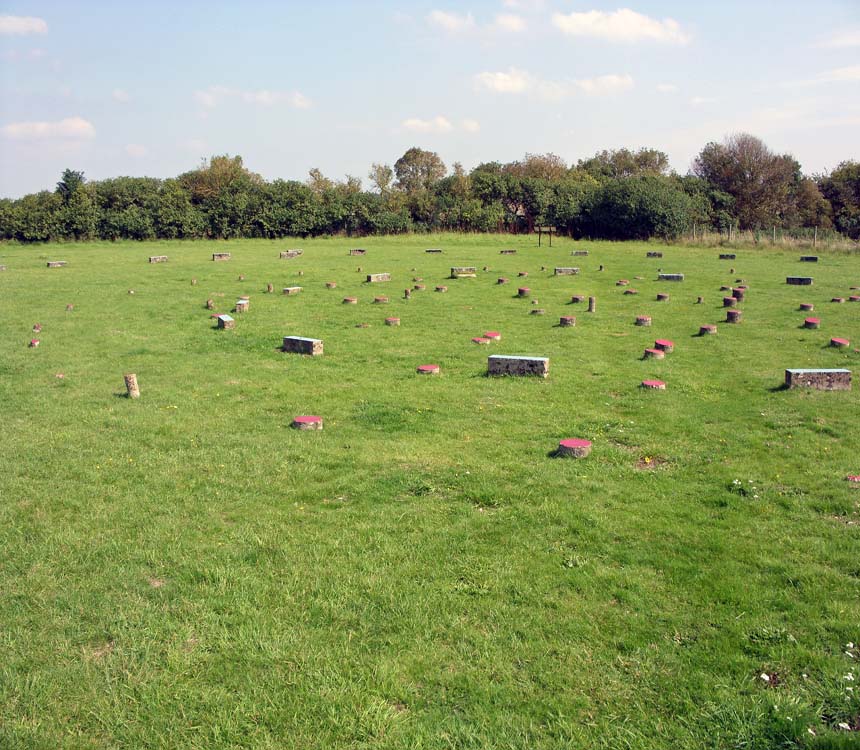
Round Barrows
Round Barrows were used for burials and are located across the road on the north side of the A4 at the same junction.
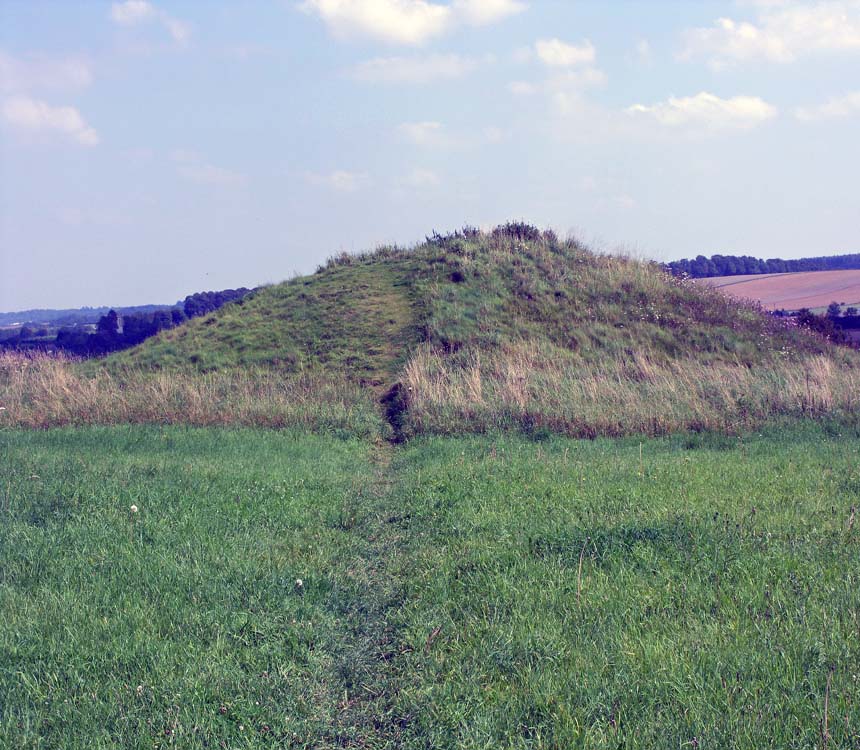
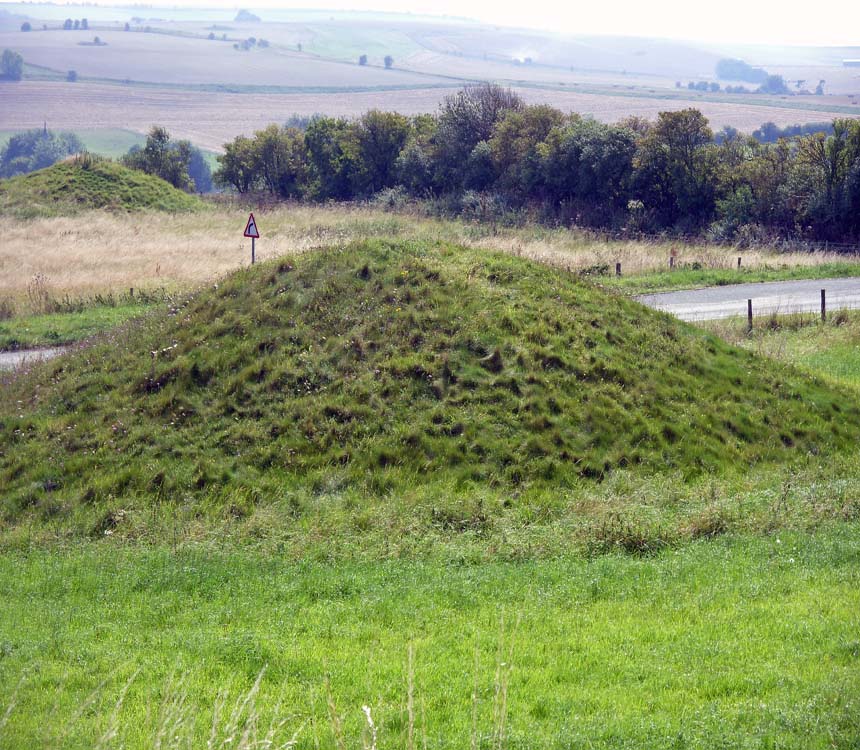
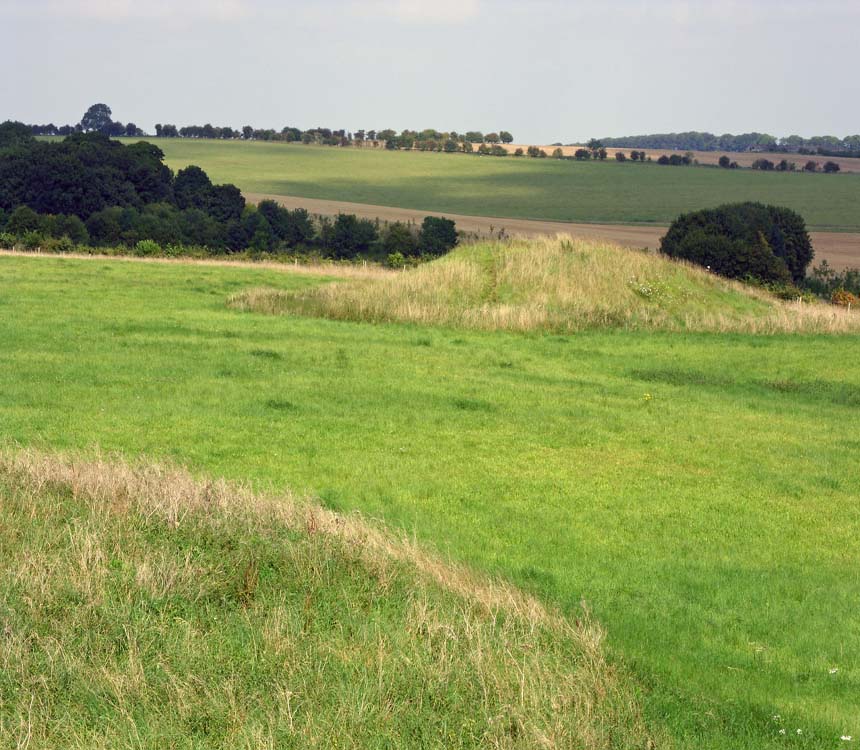
West Kennet Avenue (Stone Avenue)
The following pictures show the avenue on the way back to Avebury village. I use this route when only visiting Silbury Hill and West
Kennet Barrow. Follow the A4 road east of Silbury Hill until you reach the B4003, then head up the road, looking out for traffic. West
Kennet Avenue now starts half way up on the road, where you leave the road and follow the National Trust route. It then runs for one
kilometre back to Avebury village. It once run from the Sanctuary to Avebury village. In several of the following pictures, as in the first,
the camera sweeps around to take in the peaceful and stunning rolling countryside.
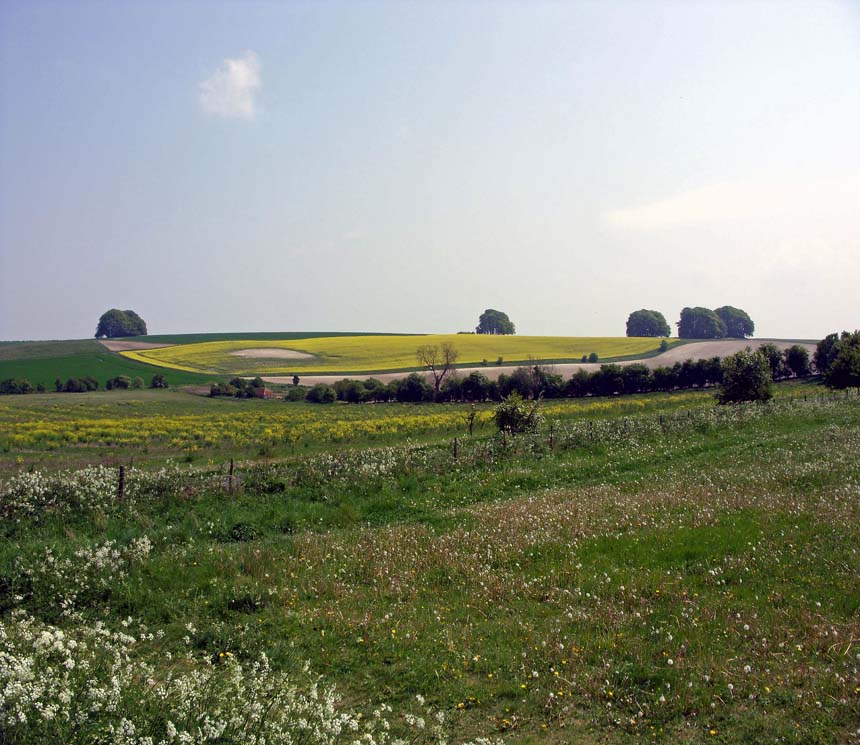
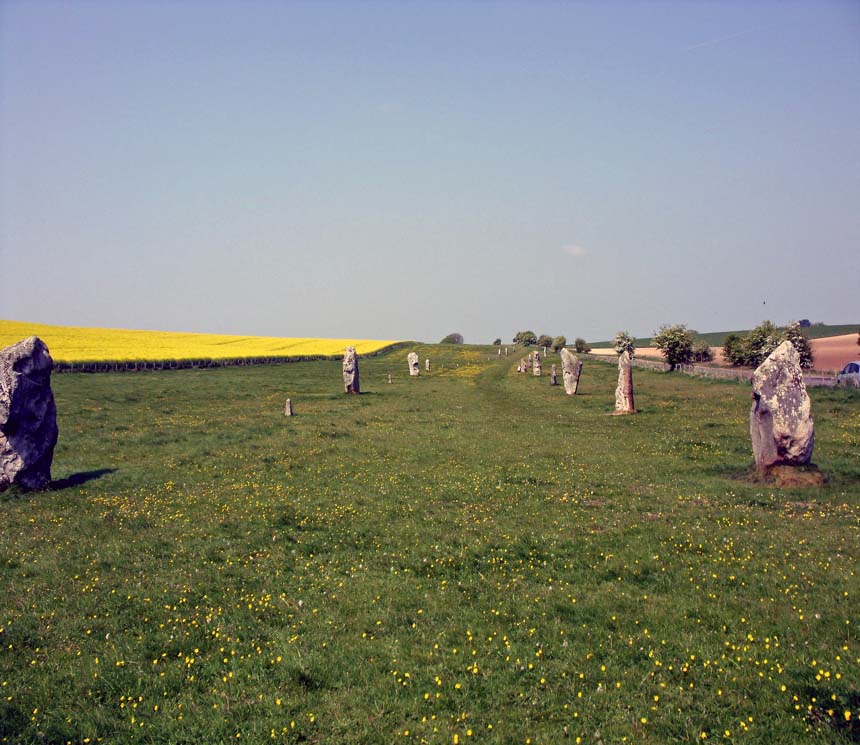
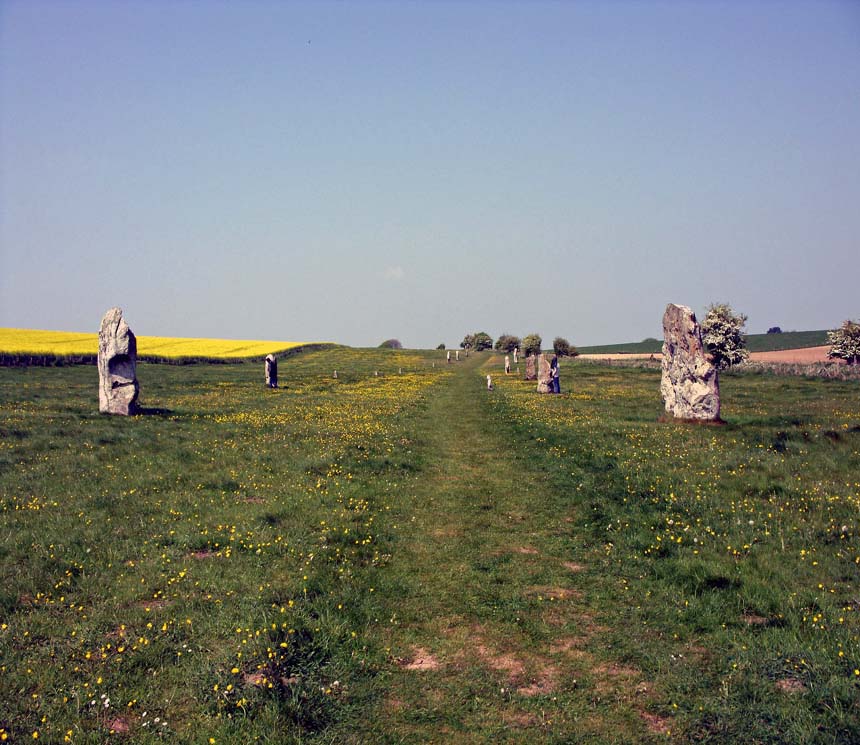
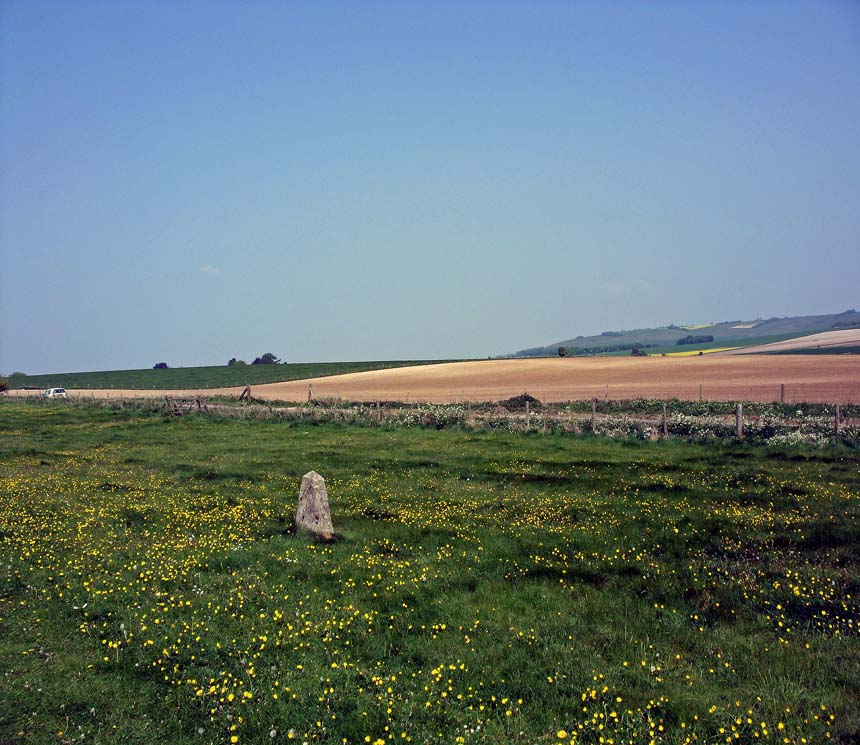
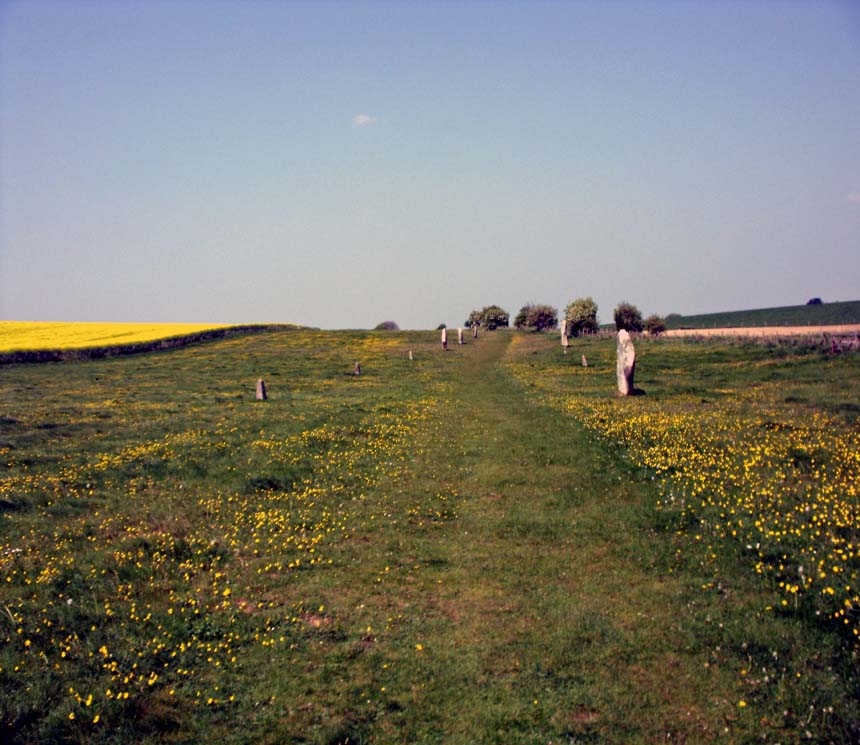
The following picture shows a view looking backwards, and about a kilometre (.6 mile) to Avebury village.
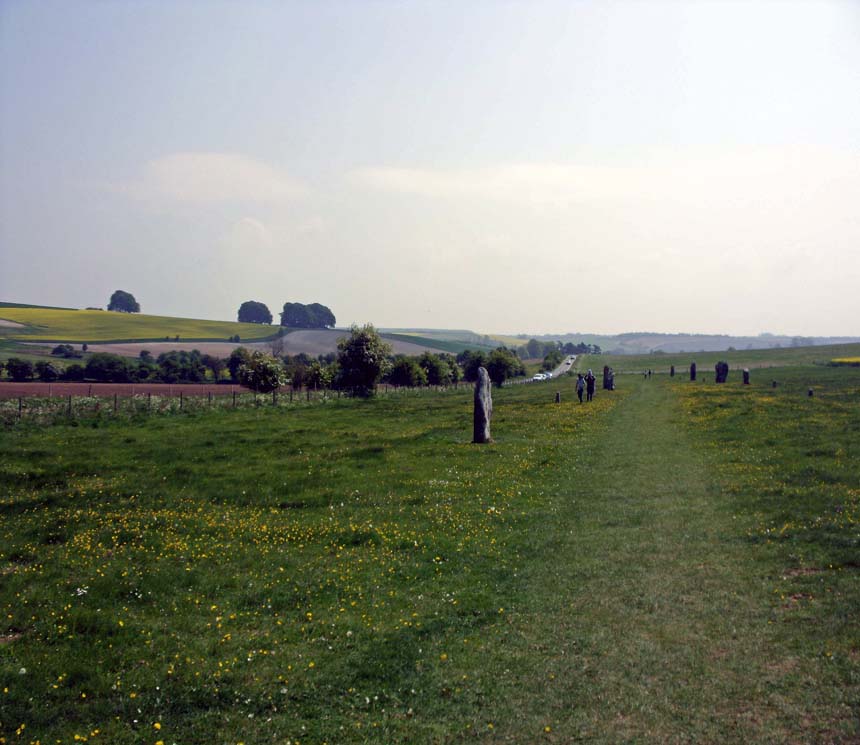
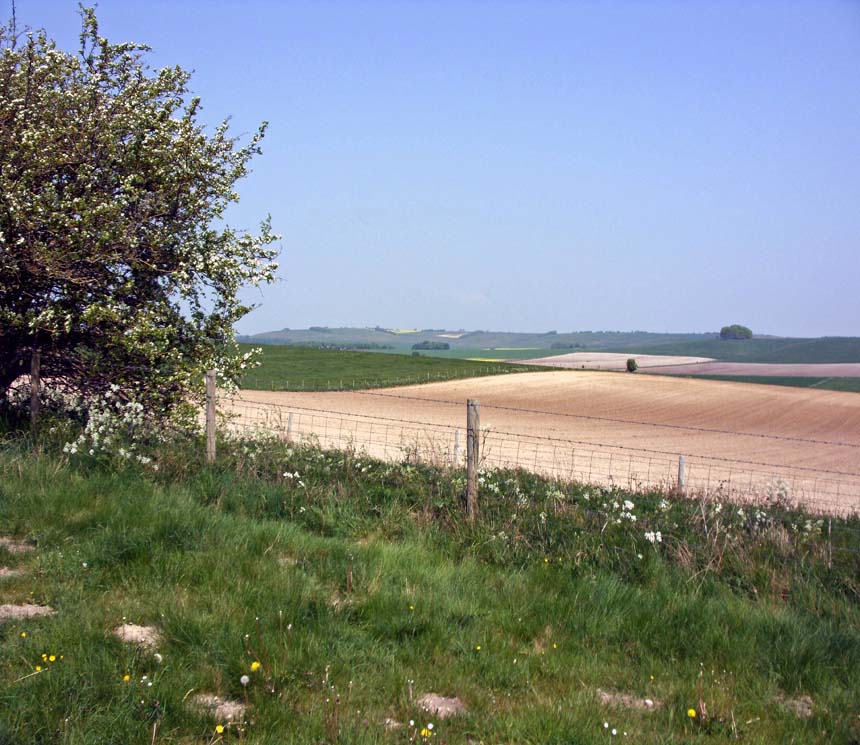
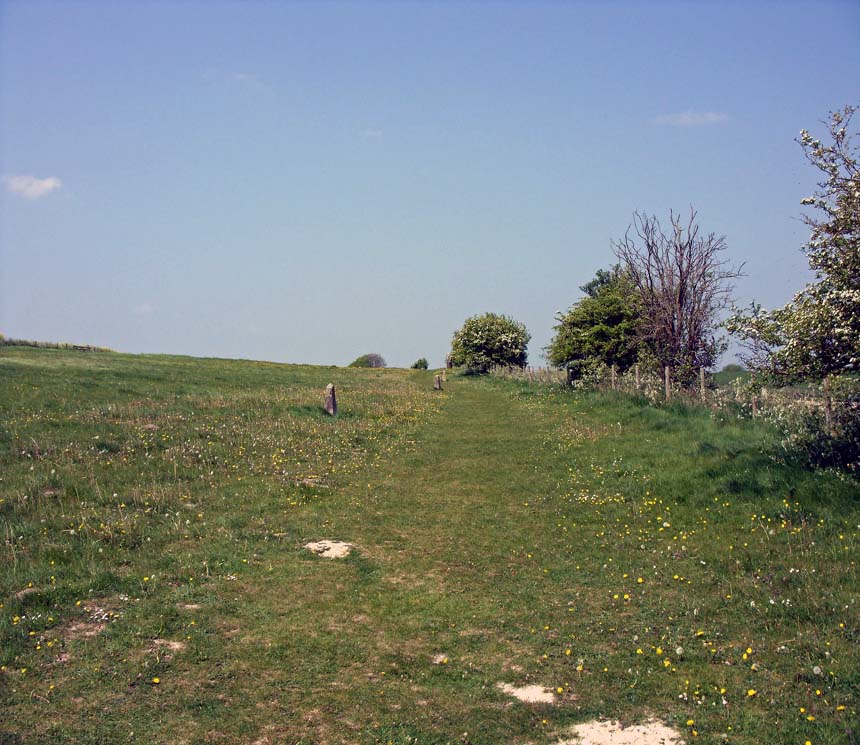
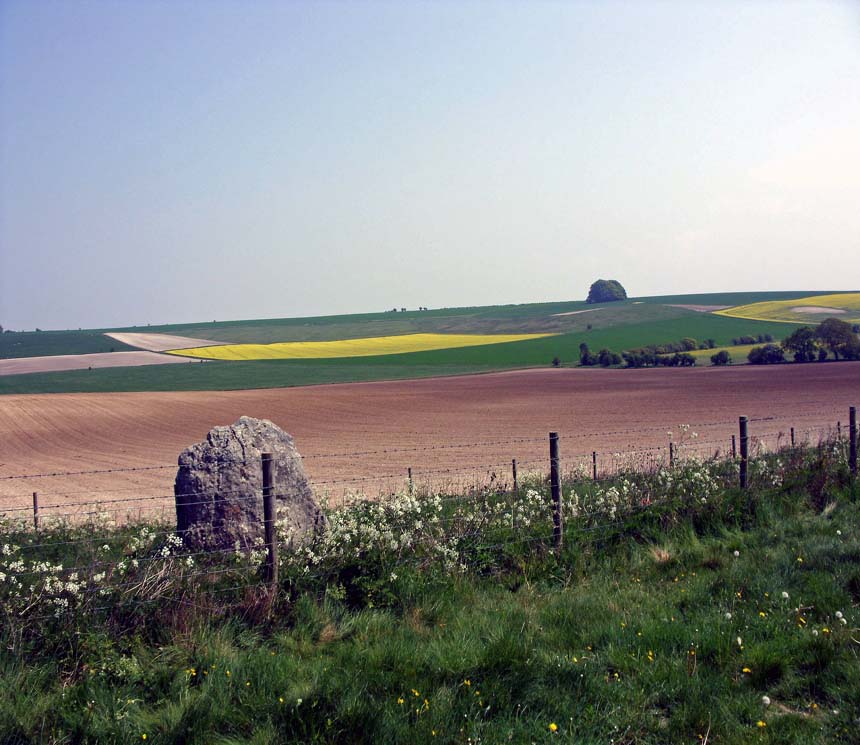
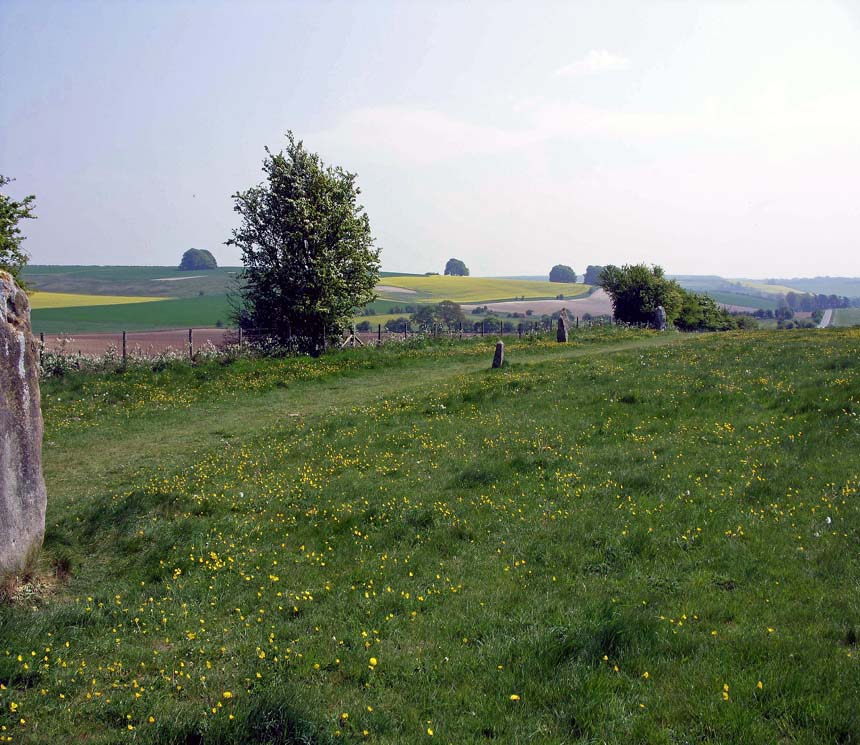
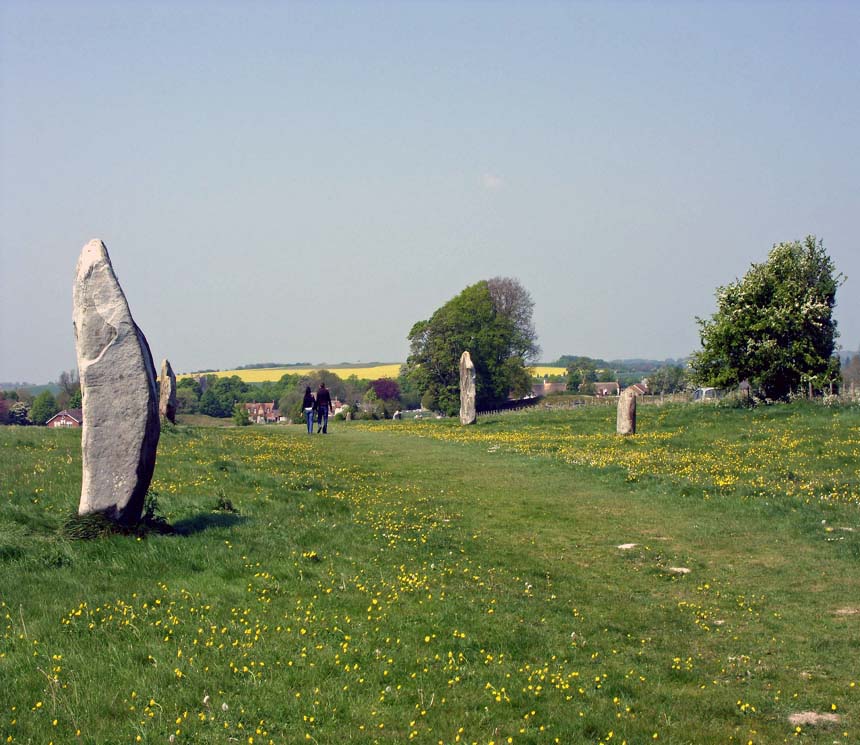
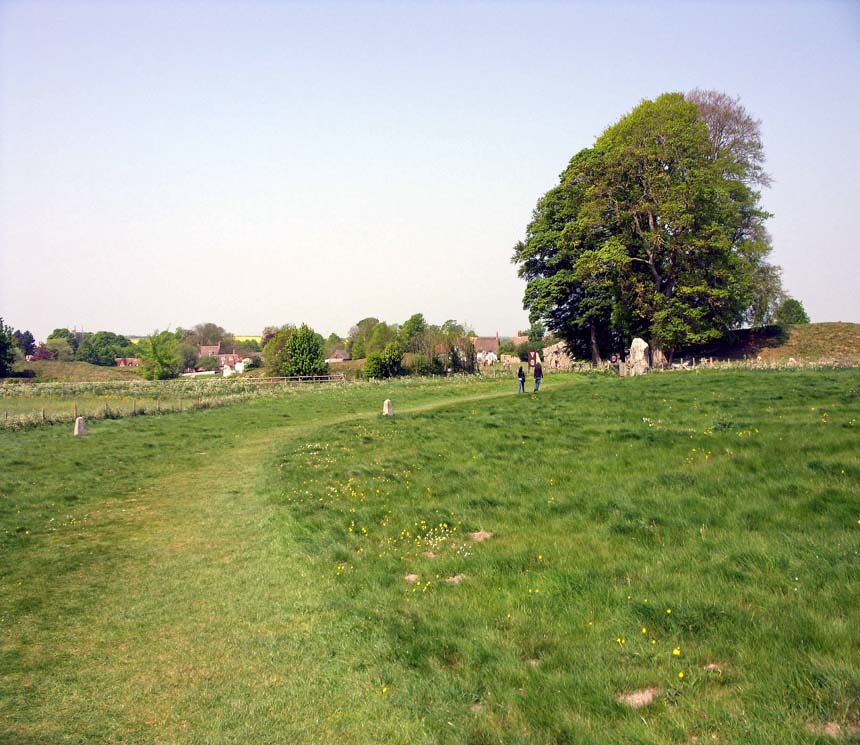
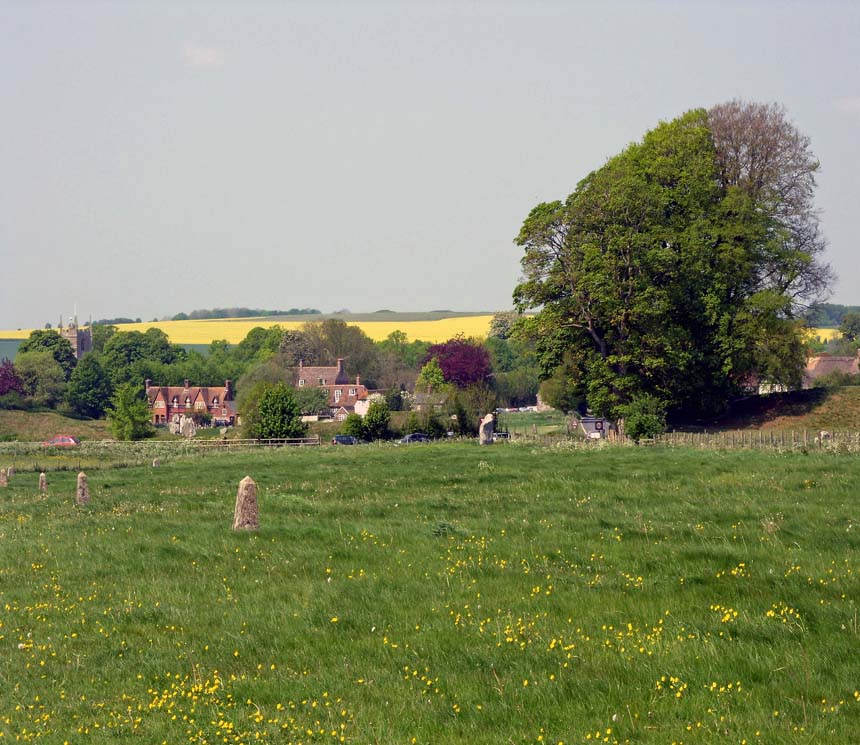
The following picture shows a view looking backwards from, and nearby to Avebury village.
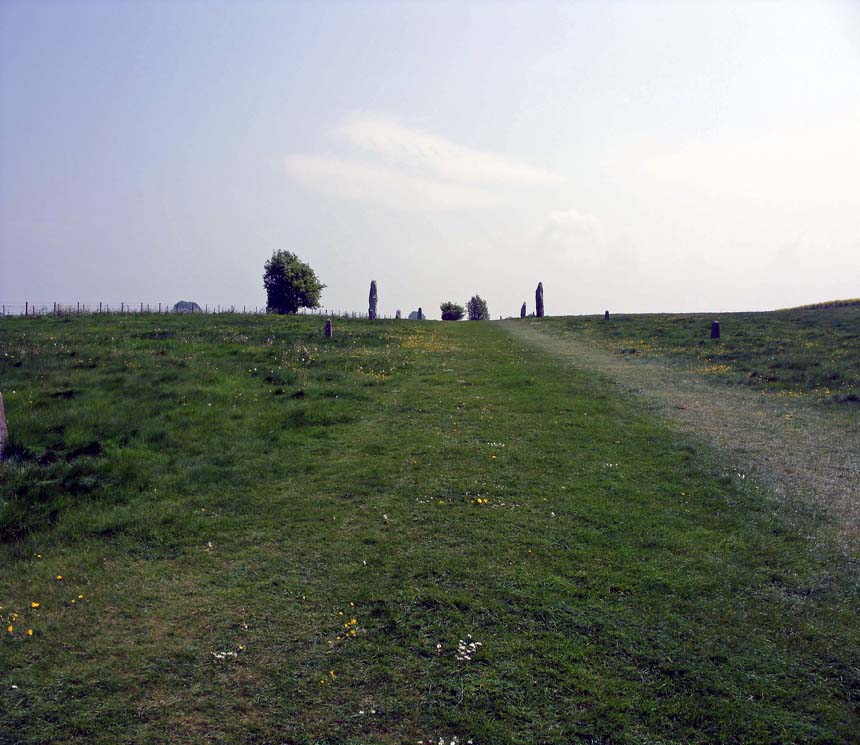
Looking westward.
